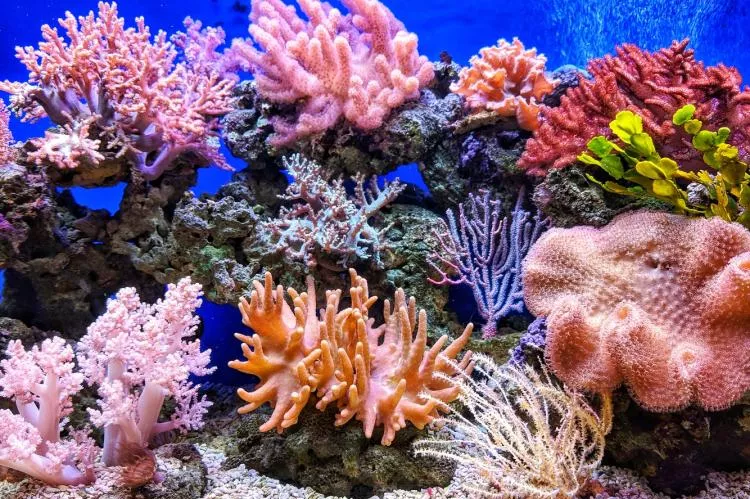Across the world, the battle to save diverse ecological systems relies on large, innovative projects that help preserve and restore fragile ecosystems. While there are a multitude of ocean habitats, from mudflats to mangroves to seagrass meadows, most people are quite familiar with the brilliant coral reef.

Coral reefs are largely found near coastlines, which means that they receive high levels of interaction from human populations. Globally, it’s estimated that around 500 million people depend on coral reefs to survive. Some rely on reefs for tourist dollars and other infrastructural considerations, while others rely on the shallow tidepools for hunting. The ocean also relies on coral reefs, too, as up to 25% of all marine species seek shelter in the microhabitats.
Additionally, coral reefs help to prevent floods and mitigate other risks associated with coastal living. In fact, one recent study conducted in the US estimates that coral reefs prevent up to $94 million dollars in flood damages per year.
In particular, the state of Florida benefits and relies on coral reefs for a variety of reasons. Not only do they provide an attraction for tourists, but they also help to protect local wildlife and provide shelter to diverse submarine species. Unfortunately, in the Key Biscayne area, nearly 50% of the local coral reefs have died off due to warming seas, pollution and disease caused by nearby industrialization, and irresponsible boating practices.
Not only is this a huge problem for the reefs and the marine life they support, nurture, and protect, but also the human community. Over 70,000 people in South Florida rely on healthy coral reefs in order to work, and estimations place the local annual income dependent on these reefs at $10 billion dollars.
However, South Floridian coral reefs have been adopted by a surprising sponsor. In June 2019, the Philip and Patricia Frost Museum of Science located in Miami undertook a partnership to restore these damaged reefs near Key Biscayne, working with NFL Green, the Miami Super Bowl Host Committee, and the University of Miami to help restore and regenerate the reef known as Rainbow Reef.
This last Super Bowl, hosted in Miami in 2020 between the Kansas City Chiefs and the San Francisco 49ers, was expected to draw in a whopping $17 billion from viewer expenditure, the NFL can certainly spare some change to help the local community. While many football fans are hung up on NFL draft odds at the moment, the Miami Super Bowl Host Committee’s Ocean to Everglades (O2E) initiative continues strong to expand the coral reef off Key Biscayne south of Miami.
O2E Initiative in Full Force
FORCE BLUE, a non-profit that helps place retired combat divers on diving projects, helped to supply manpower behind this project. Between FORCE BLUE, the NFL, University of Miami (particularly the Rescue a Reef foundation), and the guiding scientists at the Frost Museum, efforts began in summer of 2019 to collect fragments of staghorn coral species and replant them near Rainbow Reef. These fragments of staghorn reef were grown remotely at a special nursery for various coral species.
It is hoped that these staghorn coral specimens are able to join together and bolster neighboring populations. By creating a sort of "hotspot" of growing reef, not only will the coral be encouraged to grow, but a variety of marine life will also be welcome in the area with plenty of food and shelter provided by the coral. To date, Rescue a Reef, mentioned above as part of the University of Miami team, has planted over 15,000 coral fragments off the coast of Miami.
The Ocean to Everglades initiative has not only helped to champion the growth of coral off the coast of South Florida. In fact, the group has been involved in massive beach clean-ups, events to encourage green urban spaces, recycling initiatives, and even a huge educational and recreational event for students at the Everglades National Park to celebrate the park’s 72nd birthday.
By combining general public interest in the massively popular Super Bowl and associated NFL franchises, the O2E initiative is particularly able to engage with younger populations who may otherwise not understand the importance of ecological preservation.





















